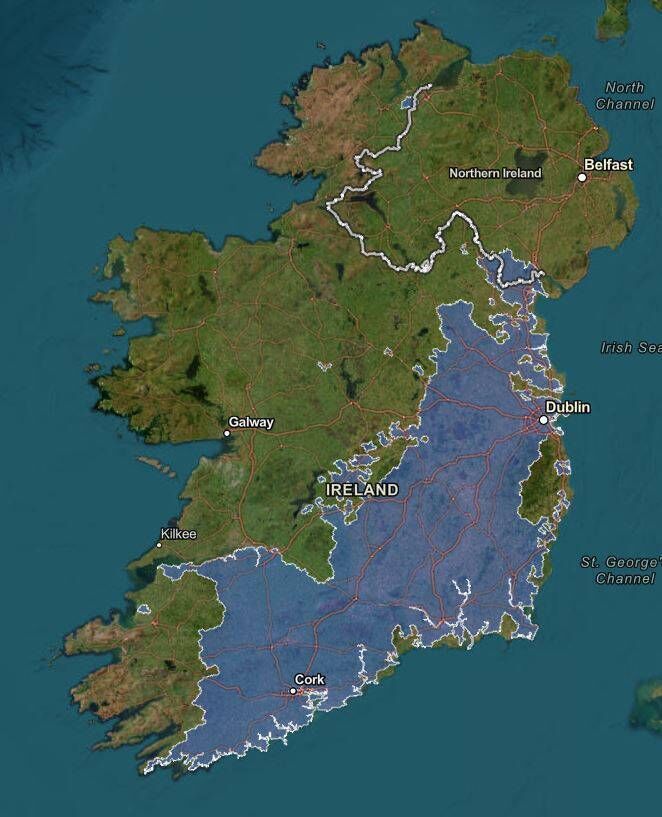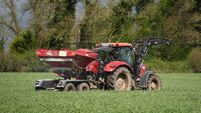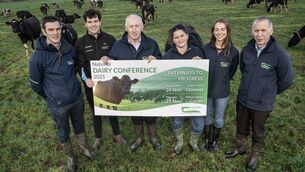Catch crop scheme offers up to €229/ha to tillage farmers

The minimum eligible area is 0.5 hectares, while the maximum area for payment is 40 hectares.
The Catch Crop measure in the Water European Innovation Partnership (EIP) scheme pays tillage farmers up to €229 per hectare per year, up to a maximum of €9,160, for catch crops grown after spring crops, in the period from September 1 to January 1.
A rate of €173/ha/year is paid for catch crops grown from August 1 to September 30.
The minimum eligible area is 0.5 hectares, the maximum area for payment is 40 hectares.
Catch Crops reduce nitrate leaching, soil erosion, and phosphorus run-off. They protect the soil from heavy rainfall, improve soil structure and root systems, and increase soil carbon and water infiltration.
Teagasc catchment co-ordinator for the Slaney river area Neilus Noonan spoke about the Catch Crop measure on a recent Environment Edge podcast. It is being implemented in catchments where water-quality improvements are a high priority, and the 1,300 applications has greatly exceeded expectations.
Mr Noonan is an enthusiastic advocate of the scheme: “It’s going to make a huge difference for water quality all around the country, particularly in the catchments of concern, which are very high in nitrates.”
“Of all the measures we have, and we have 43 in the EIP, I think catch crops are the most effective, covering all the major pollutants”, he said.
"The results of a small catch crop pilot scheme last year were highly promising.
“We found that the catch crops were able to soak up as much as six times more nitrogen than the control plot, which was a bare stubble. That gave us confidence to go ahead and roll it out on a much larger basis. It became a national pilot this year. All the high-nitrate areas were offered an opportunity to join.”
You can find out on the Farming for Water Ireland webpage if you are in a Nitrates Priority Area for Action. A blue layer on the map shows the priority action areas.
“It covers most of the southeast, as you would expect, and even a fair bit of the southwest, Cork, Tipperary and part of the midlands, all the way up to Louth and the northeast,” Mr Noonan said.
Many of the 1,300 applicants have received their acceptance letters, while some applications are still being processed.
“If you have your acceptance letter, you can start preparing for the catch crop season, but if you haven’t got it yet, please hold off. You need your approval before you can start”, Mr Noonan said.
“Once you get the letter, read it very, very carefully”, he advised. “Everything in it is very important.”

“There’s a QR code link in the eligibility section of the letter, and that brings one to the Nitrates Priority Areas for Action map. The farmer has to determine whether they are eligible or not. They have to go into that map, type in their Eircode or address, and it will bring them right to field level. You turn on the blue layer tick box. Turn off all the other tick boxes on the map” he explained.
“If the field is covered by the blue layer, it’s eligible”, he said. “Even if just part of a field is eligible, that’s fine, the whole field is eligible”, he explained.
He emphasised that farmers who get approval cannot assume their field is eligible, and it is their responsibility to check the map, to determine eligibility.
Catch crops after spring crops, from September 1 to January 1, is the more popular of the two options. This is the same as a measure already available in the Agri-Climate Rural Environment Scheme (ACRES).
However, growing catch crops from August 1 to September 30 is unique to the new Water EIP.
“That has to be sown by the end of July, start of August. You just have to have it in the ground for two months only, for August and September. By the end of September, start of October, you can replace it with another crop, a winter cereal most likely”, Mr Noonan explained.
“For either measure, you can’t plough, it's non-inversion”, he added.
The seed mixture should be at least two species, using ACRES-approved seed and seed rates. These mixtures can be purchased from one’s local co-op.
“It doesn’t matter what mix you get, once it’s ACRES-approved”, Mr Noonan said.
A farmer can make up the seed mix themselves, in the designated proportions, but seek advice if doing so, to ensure that the mix is ACRES-compliant.
Organic farmers joining the catch crop scheme must use organic seed, unless granted a derogation.
An online declaration form should be submitted within a month of sowing the catch crop. “You attach a map of the area sowed, and you declare what parcel you sowed”, Mr Noonan explained. Receipt documents are kept on file at home, in case of inspection.
A farmer in the ACRES catch crops programme (or any other scheme involving a catch crop measure) cannot simultaneously overlap Water EIP catch crops on the same land area designated for ACRES, during any given programme year. They can, however, apply for the Water EIP catch crops on non-ACRES designated, different fields on their farm.
“They have to avoid at all costs putting our EIP catch crops into those ACRES fields”, Mr Noonan said.
Those already growing catch crops for the two or three-crop rule, as part of crop diversification, are not eligible for the EIP catch crop scheme on fields being used for that purpose.
Similarly, farmers who have set aside land for overwintering geese and swans (ACRES) cannot grow EIP catch crops in those designated areas.
“Under normal circumstances, they have to either grow a winter crop or have a catch crop in the ground until March 1. In neither case can they use EIP catch crops there”, Mr Noonan explained.
Stubble cultivation rules require 20% to 25% of the cereal area on a holding must be left untouched for ground-nesting birds. “We don’t want the EIP catch crops impinging on that rule”, Mr Noonan said. “We’re not in competition with that, we don’t want to cause trouble for wild birds.”
Participants should ensure any light grazing of the catch crop only takes place where soil erosion is not considered to be an issue. Intensive strip grazing or zero grazing is not permitted.
“If you are intending to graze the catch crops, you must leave a 4m margin all around the field. That’s to protect the margins and drains and streams from sediment loss. You must also have a 30% lie back,” Mr Noonan explained.











